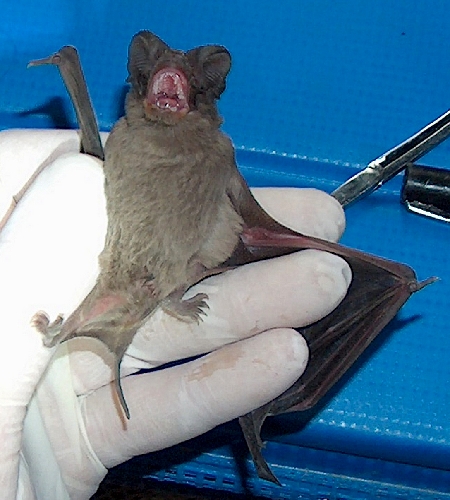Dry climate might save bats
Biologists are hoping that Nevada's arid climate will keep a fungus from taking hold in caves and mines where hibernating bats would be vulnerable to white-nose syndrome, a condition that has killed more than 1 million bats in the Northeast.
"The West has been nervous for a long time, but everyone is really nervous now," Nevada Department of Wildlife veterinarian Peregrine Wolff said Monday.
"One of the things we all hope in the back of our minds is that that particular fungus will find the Nevada environment inhospitable, but that remains to be seen," she said in a telephone interview from Sparks.
Her comments followed an announcement by the Bureau of Land Management that said the federal agency is taking steps to keep the fungus from spreading to points west of Oklahoma and Missouri, where it was last detected.
No cases of white-nose syndrome have been reported in Nevada, but wildlife officials are worried that it could be transmitted by bats from the East that migrate to Texas, a destination as well for millions of bats that migrate southward through Nevada in the late summer and early fall.
"I'd say the question is wide open as to whether or not we have the conditions," said Brett Riddle, a life sciences professor at the University of Nevada, Las Vegas. "I would like to think we don't have the conditions out here, but it's spreading pretty rapidly."
The fungus that causes white-nose syndrome grows in the humid conditions of cool, moist caves instead of the arid Southwest conditions of caves and abandoned mines in Nevada.
White-nose syndrome was first observed in a colony of hibernating bats in 2006 in a cave, 40 miles west of Albany, N.Y.
It appears as a powdery white substance on the muzzles of bats. It causes lesions on their skin and wings that irritate them, affecting their ability to hibernate and causing them to burn up energy and become weak and susceptible to disease.
Little brown bats have been the species affected most by white-nose syndrome, but the fungus has been found in at least six other bat species.
Researchers reported in the Aug. 6 issue of the journal Science that the white-nose syndrome fungus has the potential to cause little brown bats to vanish in the Northeast in 16 years.
"The BLM administers thousands of caves and abandoned mines, and bats use many of them for hibernation or roosting," BLM Director Bob Abbey said in the agency's news release.
"Working together with stakeholders and our agency partners, we hope to be able to prevent or contain the spread of this devastating disease."
Among the prevention measures the BLM is considering is restricting access to caves and abandoned mines where bats live. Another measure is aimed at disinfecting clothes and gear of researchers and mine workers who could transmit the fungus.
Sandra Brewer, the BLM's wildlife program leader for Nevada, said the BLM and the Forest Service are encouraging voluntary closures and developing procedures for entering caves.
The BLM's Stay Out, Stay Alive campaign discourages the public from entering abandoned mines for safety reasons. The agency's news releases warns that exploring mines where bats lives "increases the likelihood of spreading the white-nose syndrome fungus."
Contact reporter Keith Rogers at krogers@reviewjournal.com or 702-383-0308.

















